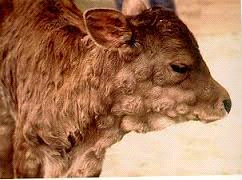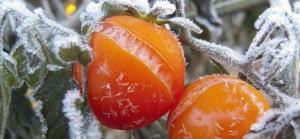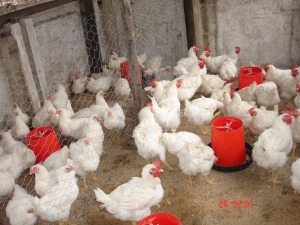The Profiling Project – The Launch – and what it’s all about
On the 3rd of July the Youth Development Department of the Zimbabwe Farmers Union launched the Young Farmers Profiling Project. A project designed to showcase the success of young Zimbabwean farmers, with the overall goal to integrate Youths into the economy through agriculture for sustainable livelihoods and rural development. Breaking it down to how the project tackles this task: through highlighting successes of young farmers more young people shall be stimulated to venture into farming
How to tackle this task?
We found four successful young Zimbabwean Farmers, visited their farms and captured their stories and thoughts on tape. Going through a critical editing process we came up with 7 to 9 minutes of excitement. Excitement in the form of unique stories told by inspiring young people and made easily accessible to the broader audience. With this being the start of the project we are yet to find four more farmer-life-stories to tell. But we couldn’t wait to let the public know about this…
The launch of this project at the Zimbabwe German Society (ZGS) in Harare was designed to tell as many people as possible about the fascinating work of these young farmers. But more than that is was made to bring together different players in the agricultural sector. With round about 120 people from widely different sectors the event can be described as a full success. Representatives from the Ministries, NGO’s, the private sector and the media followed our invitation and got truly inspired!!!
So follow their example and get some motiviation by these stories:
There is Francis Chirimuuta, farming in Chitowa, Murehwa. With the age of 27 he manages a 70 hectares farm with 30 hectares under irrigation, used for horticultural production. The rest is for his herd of 35 beautiful cattle which he nourishes carefully and keeps in perfect shape. His great passion though is the Mbambaira, the sweet potato. He puts all possible efforts in improving his knowledge about the crop and possible new developments. With this he manages to transfer knowledge to his farm workers and builds up the capacity in their communities. But also other young farmers benefit from his skills and research. By forming Young Farmers Clubs in the area he ensures that the new generation of farmers can profit from his research and experiences. This approach leads to his success as a farmer and his contribution to the development of the rural community he lives in.
Please get ready to meet Francis…
Living in Marondera, 29-year old ZFU young farmer Ruramiso Mashumba manages to produce sweet peas for the export market. Her studies in the UK made her especially realize the differences, but also the similarities between European and Zimbabwean farming. With this knowledge Ruramiso is always keen on new approaches, ideas and technologies. She manages to find interesting new ways of improving farming and is happy to share them with other farmers in Zimbabwe. Together with other young farmers she shares her skills and knowledge by forming ZFU Young Farmers Clubs, but also increasingly the social media. Via WhatsApp, Twitter and Facebook the rapid distribution of problems also lead to instant solutions of them. Her ambitions of enhancing not only her skills but also her employee’s and her colleague’s show how responsible-minded this young generation of farmers is.
Don’t miss out on listening to Ruramiso!!!
Munyaradzi Shamuyarira is a shining example of a self-made man. By using the opportunities and resources he was given he shows that you don’t have to wait for opportunities, you have to seek them and take the action. Being based in Marlborough, Harare he saw the vast potential farming offers to young people, even in urban areas. Starting to farm in his mother’s garden he used the money he earned by doing another job to improve his skills and possibilities. The result is overwhelming: he built a greenhouse where he produces tomatoes and English cucumber. Besides that his production of cauliflower and broccoli is quiet impressive. Therefore if you go to your next supermarket don’t forget to get some really good vegetables!
Be prepared for some debates about urban farming with Munya!
And last but not least Bright Nezomba. Bright’s story is something to remember. Losing his parents at a very young age he was raised by his grandmother in the Honde Valley, Manicaland. Although being interested in farming, Bright went to the mines when they discovered diamonds in the area. But soon he realized that farming is a better and more rewarding business to be in. Therefore he left the mines and came back to farm on his grandmother’s land.To date this remarkable 25 years old young farmer has a plot of 1.5 hectares under production. Producing bananas on 0.7 hectares on a contract basis he is able to produce maize on the rest of the land. He managed to gather other young farmers and start to work in a producer group with them and make use of the advantages of group schemes in agricultural production.
So be excited to meet Bright!
What is the way forward?
These stories are unique in a way, but as we manage to find these four people we are confident that there are others out there. And we are keen to fulfill our task to find these and bring them all together to create a melting pot of knowledge, skills, ideas and inspiration. With this we want to reach out to all the young Zimbabweans out there who are capable of venturing into a viable and rewarding business: Farming!!!
You are able to recreate the event of the launch for yourself. Therefore visit our YouTube channel and watch the ZFU Young Farmers Profiles. Simply follow the link:
https://www.youtube.com/playlist?list=PLIV_TNo6W4Rez9Ak6mP17nX31z2FV2gLG
And don’t forget to let us know what you think about it! Either here or on our Facebook page: Young Farmers Clubs!









